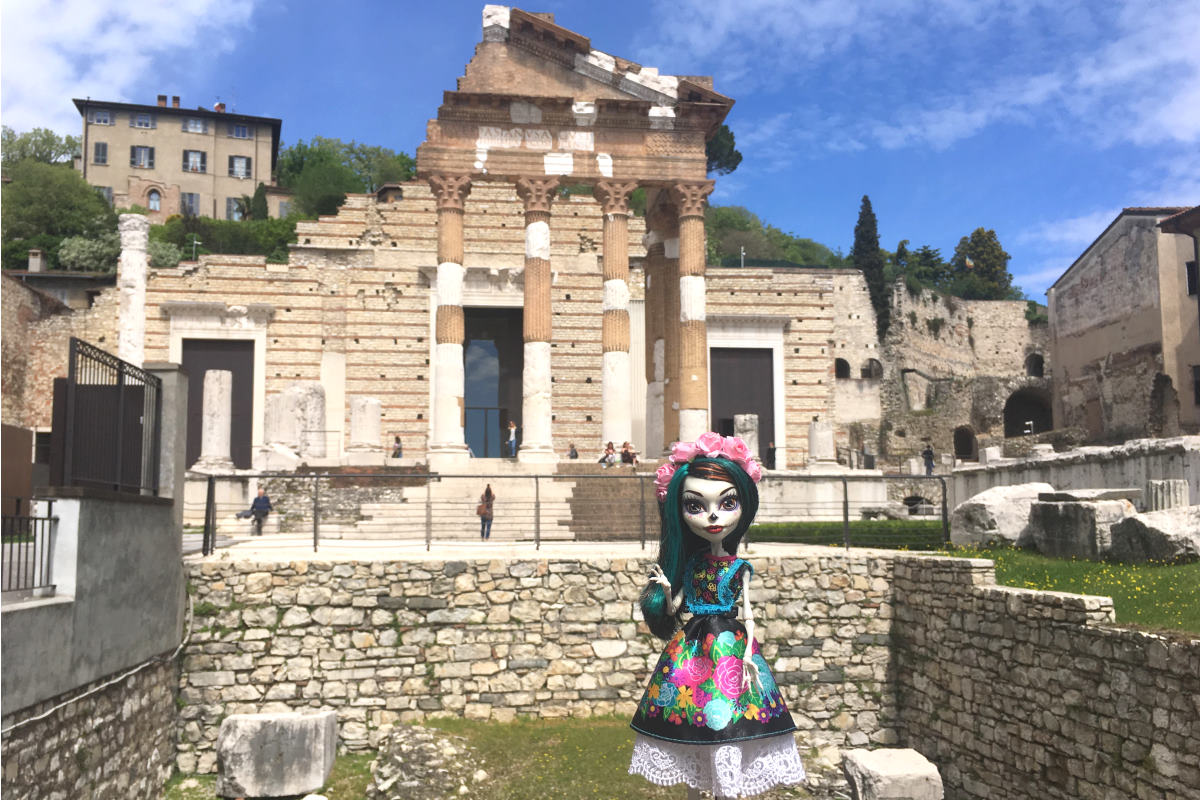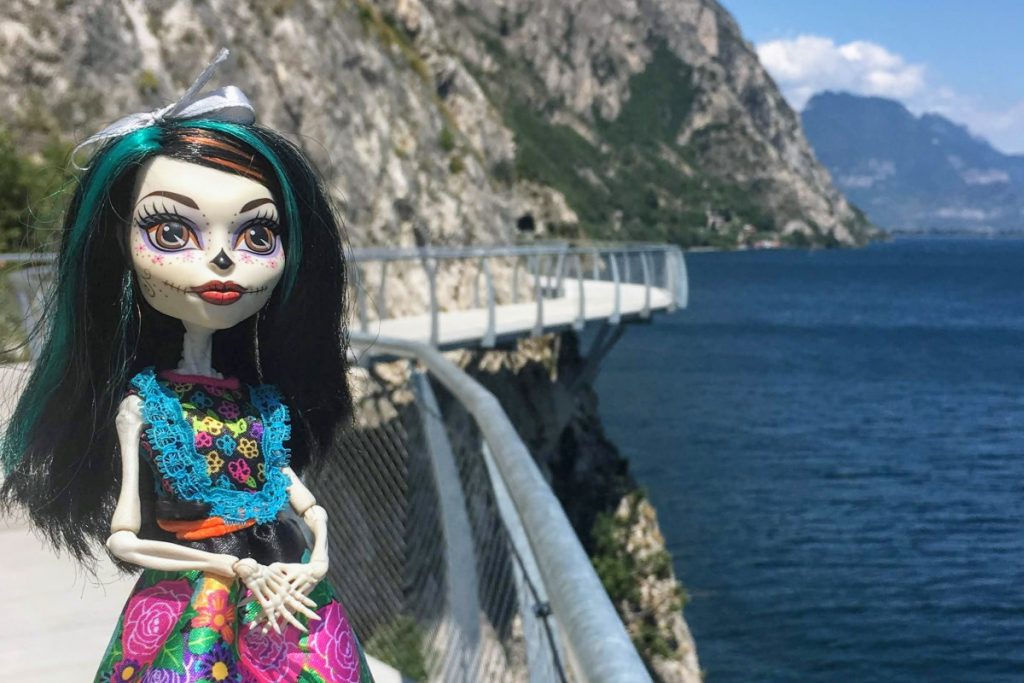Brescia is an ancient elegant city, inhabited since the Bronze Age. Its Roman and Lombard monuments have been declared a World Heritage Site by UNESCO. Besides, Brescia, city of the Mille Miglia race, together with Bergamo, is the Capital of Culture 2023, so let’s find out what to see in Brescia in one day.
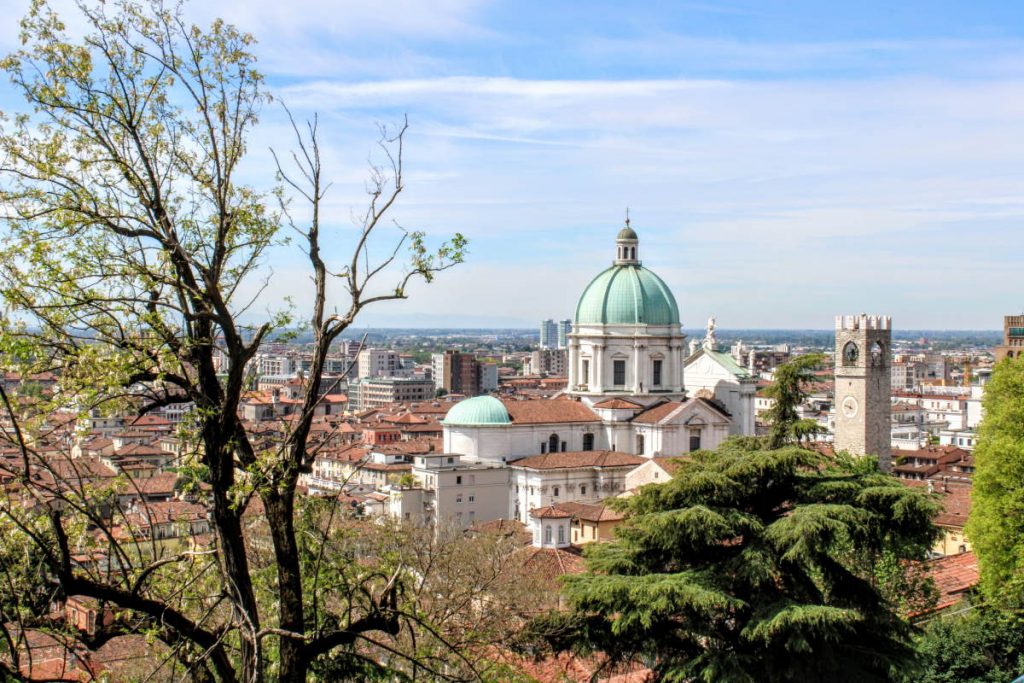
To visit Brescia and admire its architectural beauty, highlighted by tree-lined avenues and lush parks, you need more than one day but, by relying on this simple itinerary to do on foot, I assure you that you will be able to see a lot. So let’s start.
What to see in Brescia, Italian capital of culture 2023
As the city center of Brescia is almost all LTZ, I recommend you to leave your car in one of the four exchanger parking lots in the city and then reach the center by subway: Prealpino, Poliambulanza, Casazza and Sant’Eufemia Buffalora are the parking lots close to the metro stations, where the parking ticket is valid for bus/subway too so, when you collect your car, you will only pay for the trips you’ve made.
Stepping out at the Vittoria station you will find yourself in the square with the same name. If you choose to arrive by car, there’s a big underground parking lot in the square.
Piazza della Vittoria
This Brescia itinerary starts in Piazza della Vittoria. Built in the late 1920s, is one of the main squares of the city, a large space surrounded by imposing buildings in the rationalist style, a significant example of the urban planning trends of the fascist regime. Of particular interest is the Torrione INA: the first Italian skyscraper and one of the first in Europe, and the red stone stage of Tolmezzo, where Mussolini gave the inaugural speech of the square in 1932.

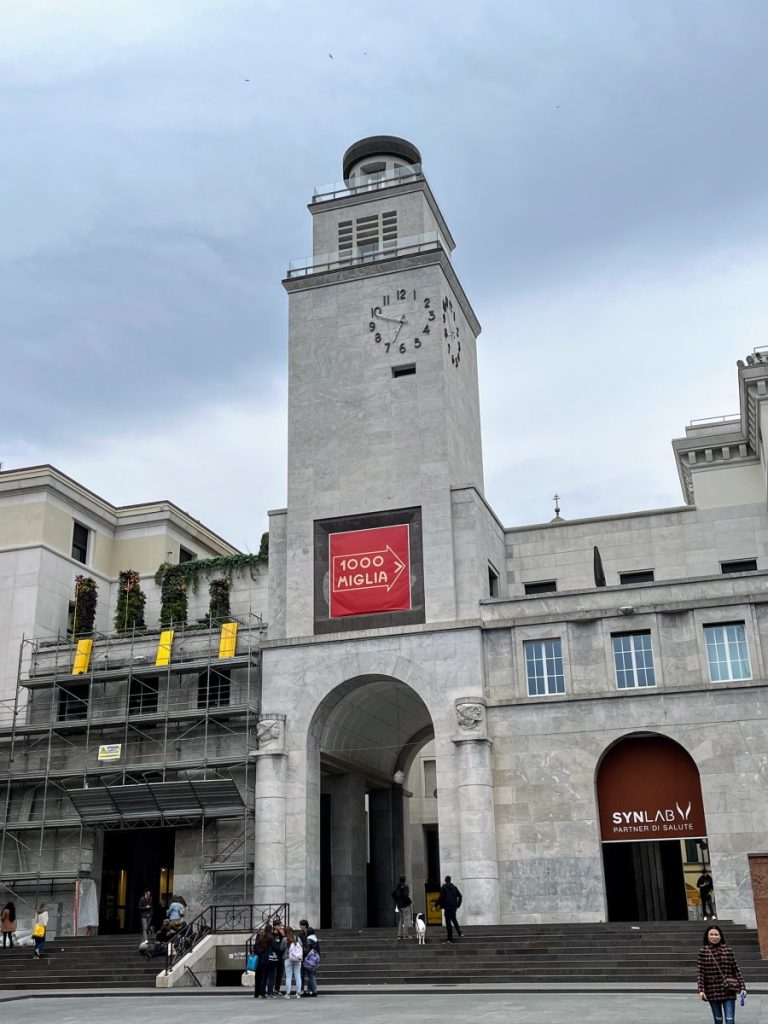
Piazza Paolo VI
Facing the big post office and telegraph building, go right and walk through the tunnel that appears at the top of the stairs, under the tower with the clock, until you come to via X Giornate. Cross the road and take the street in front of you, via Padre Giulio Bevilacqua, which will lead you to piazza Paolo VI.
Here you can admire the beauty of the Duomo Vecchio, Brescia’s co-cathedral, dating back to the year 1100. Although expanded several times over the centuries, it has kept its original structure and is one of the most important examples of Romanesque rotundas in Italy.
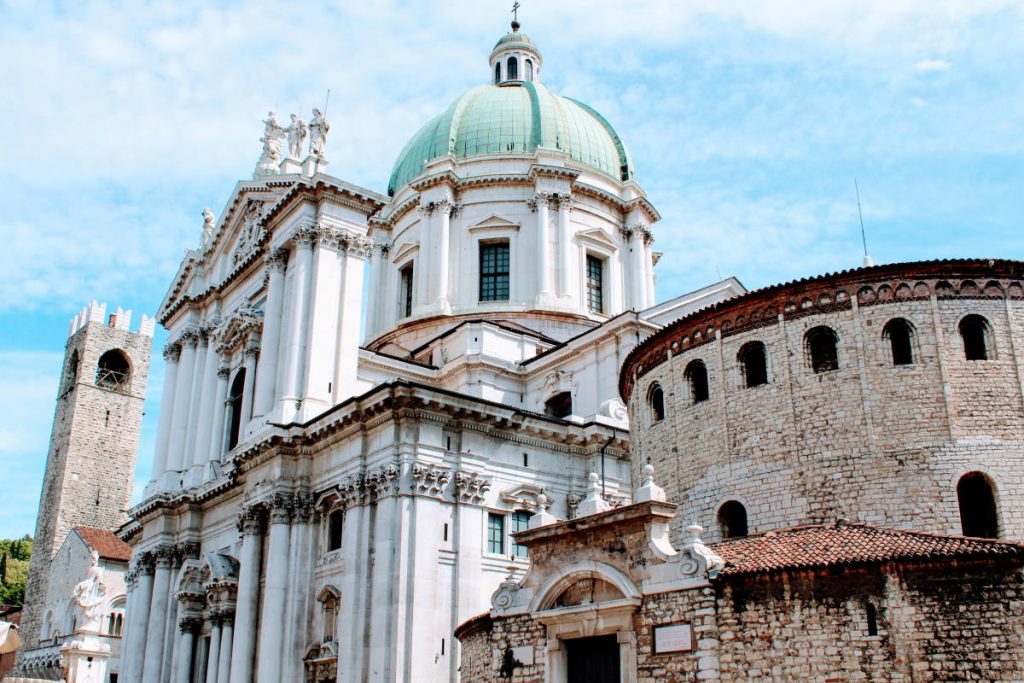
Please note that admission to all the churches of Brescia is free.
Beside the Old Cathedral Duomo Vecchio, stands the Cattedrale Estiva di Santa Maria Assunta, or “New Cathedral”, what is now the main church of Brescia. Built between 1604 and 1825 on the area where the early Christian basilica of San Pietro stood.
The Baroque facade is made of Botticino marble, coming from the homonymous quarries at the east of the city. The same marble was used to create the Altare della Patria in Rome, the White House in Washington and even the Statue of Liberty, as well as other important monuments around the world.
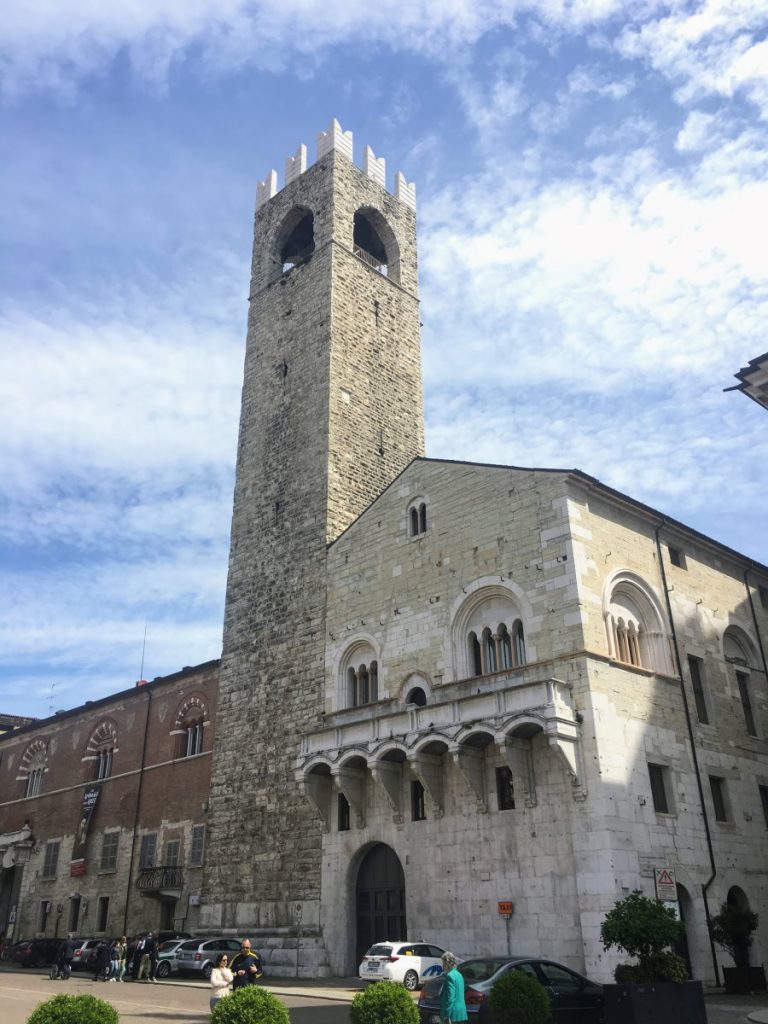
On the same side of the square, you will find the Palazzo Broletto dating back to the 12th century. Center of the government of the Municipality and of the Lords, it houses the offices of the Provincial Administration, of the Prefecture of Brescia as well as some municipal offices.
Palazzo Martinengo and Capitolium
Continue by taking vicolo S. Agostino at the end of the square, then turn right into Via dei Musei, an ancient Roman road (decumano massimo).
At number 30 is the Palazzo Martinengo Cesaresco Novarino. A noble palace built in the second half of the 17th century. The severe facades hide a beautiful internal garden. The building hosts important art exhibitions throughout the year.
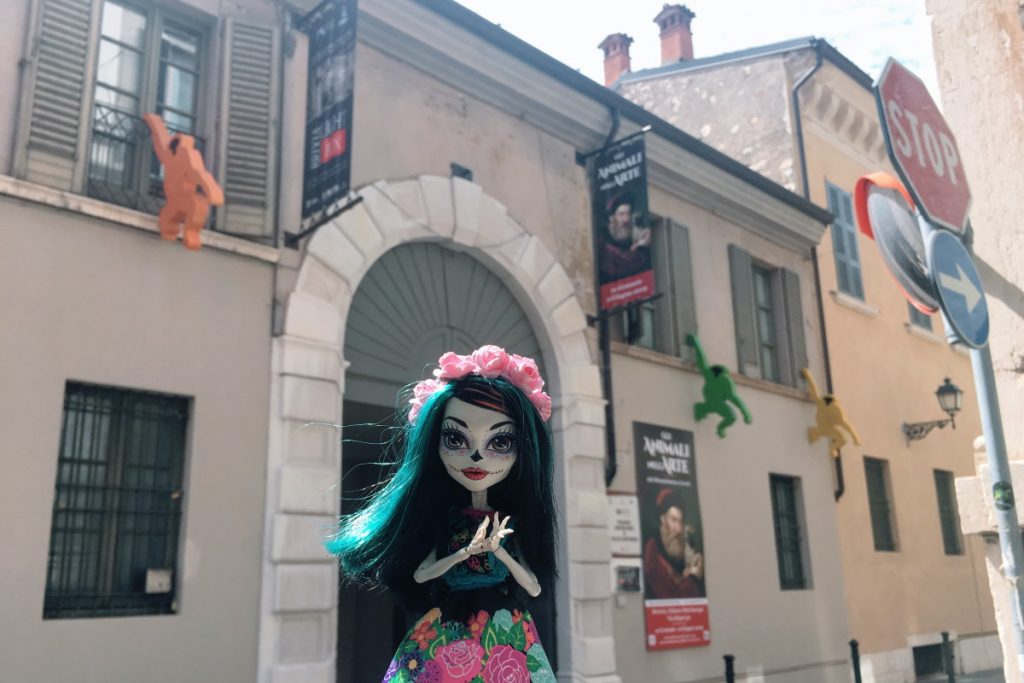
A little further, at number 41, there is the small church of Santa Maria della Carità, dating back to the sixteenth century and originally dedicated to Santa Maria Maddalena, it is a real jewel, rich in stuccos and frescoes.
An important monumental complex to see in Brescia is undoubtedly the Capitolium. Continuing along via dei Musei you will arrive at the UNESCO site which includes the archaeological area of the Capitolium or the Capitoline Temple. Its construction is attributed to Vespasian, in 73 AD. In the opposite Piazza del Foro there are some other Roman remains.
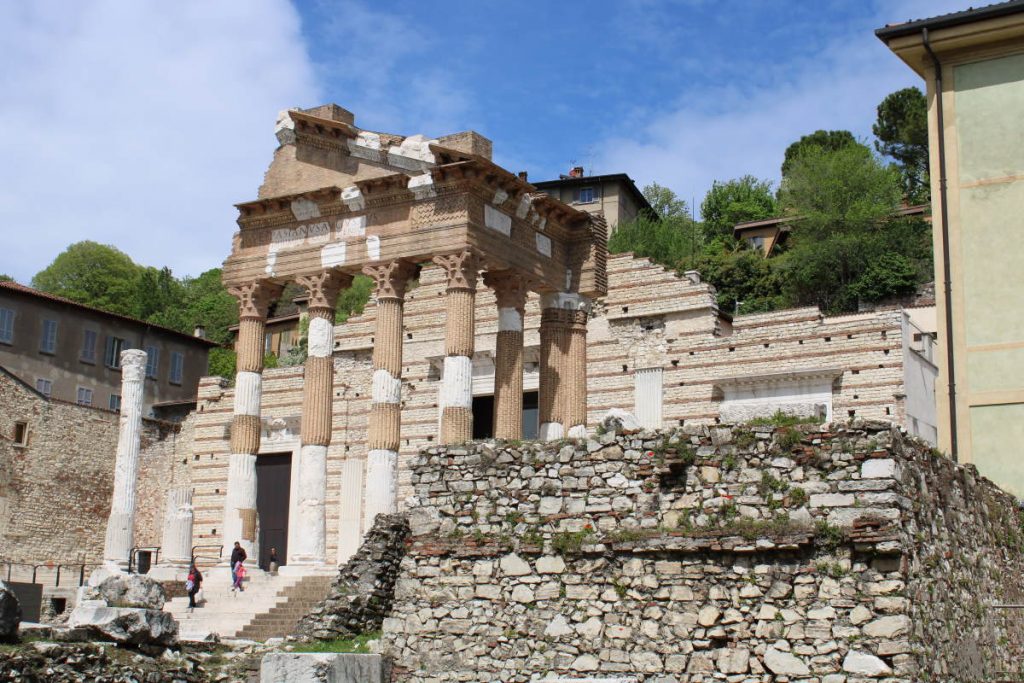
Monastero di Santa Giulia
Continuing along via dei Musei you will find, on your left, the medieval Monastery of San Salvatore founded in 753 AD from the King Desiderio. Today is called the Monastery of Santa Giulia and holds the city museum. To visit it we recommend a couple of hours because it is vast and very interesting. In the museum you shall not miss: the Romanesque oratory of Santa Maria in Solario, the Coro delle Monache, the Croce di Desiderio and the crypt of the church of San Salvatore.
Chiesa di San Cristo
You should now go back along via dei Musei and turn right into via Giovanni Piamarta. On this street, at number 9, a stairway will lead you into the Chiesa di San Cristo, called the Sistine Chapel of Brescia, built towards the end of the 1400s. The single nave interior features magnificent frescoes from the same period.
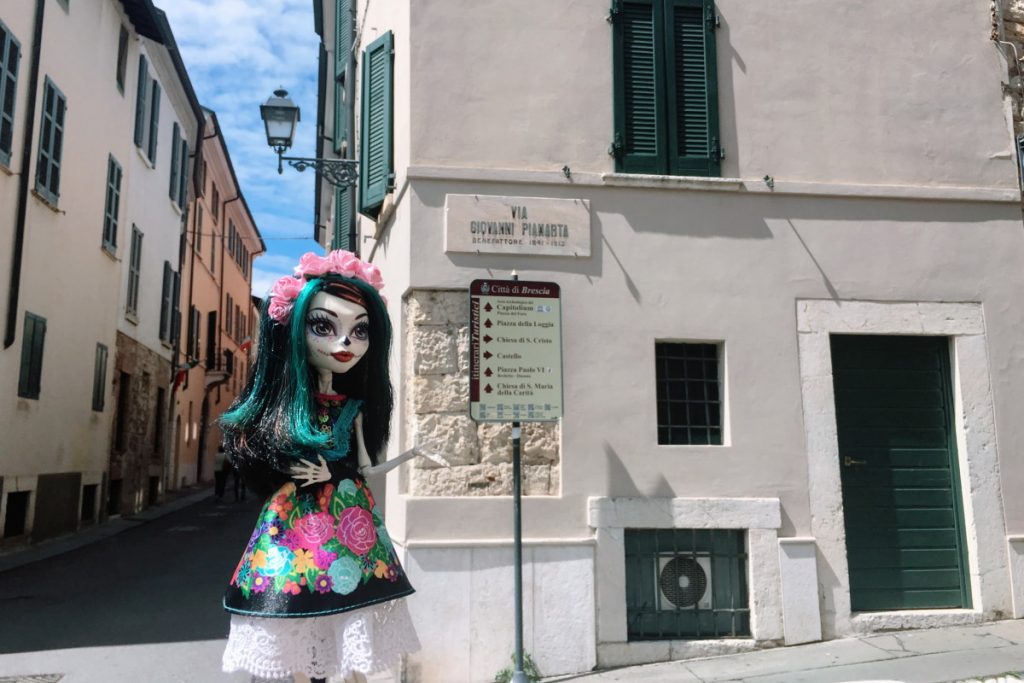
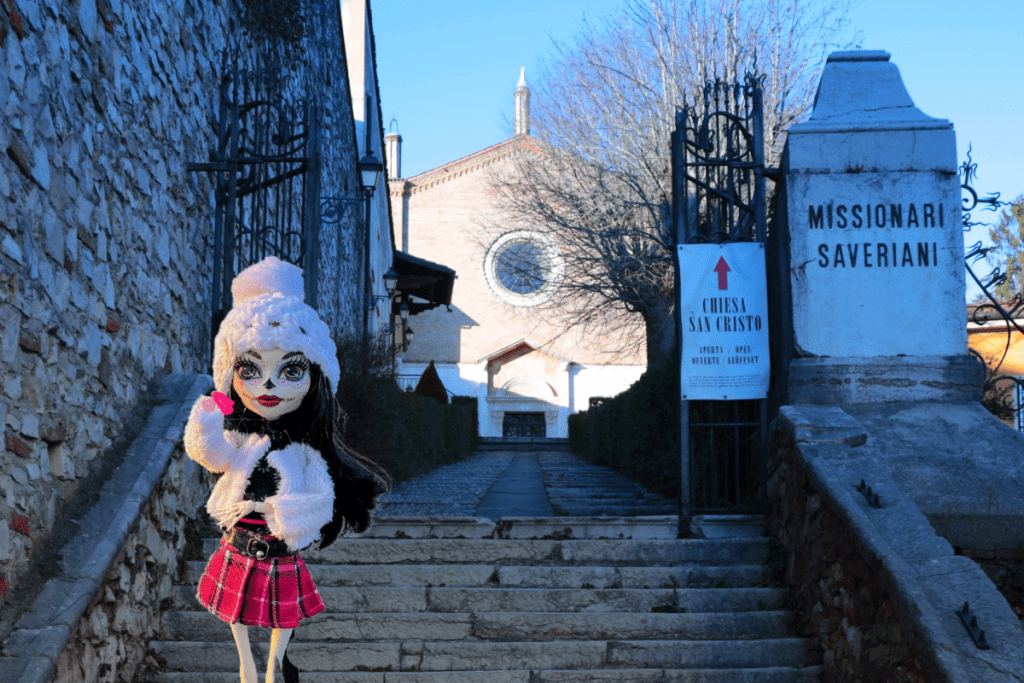
Castello di Brescia
Continuing along via Piamarta, turn left and at the end of the slope and you will arrive at Brescia Castle, a medieval fortress, built between 1200 and 1300 on( the) top of Mount Cidneo. Here you can visit the gardens for free and climb the towers from which admire the city from above. Inside the castle there is the Museo delle Armi, the Museo del Risorgimento and the Specula Cidnea.
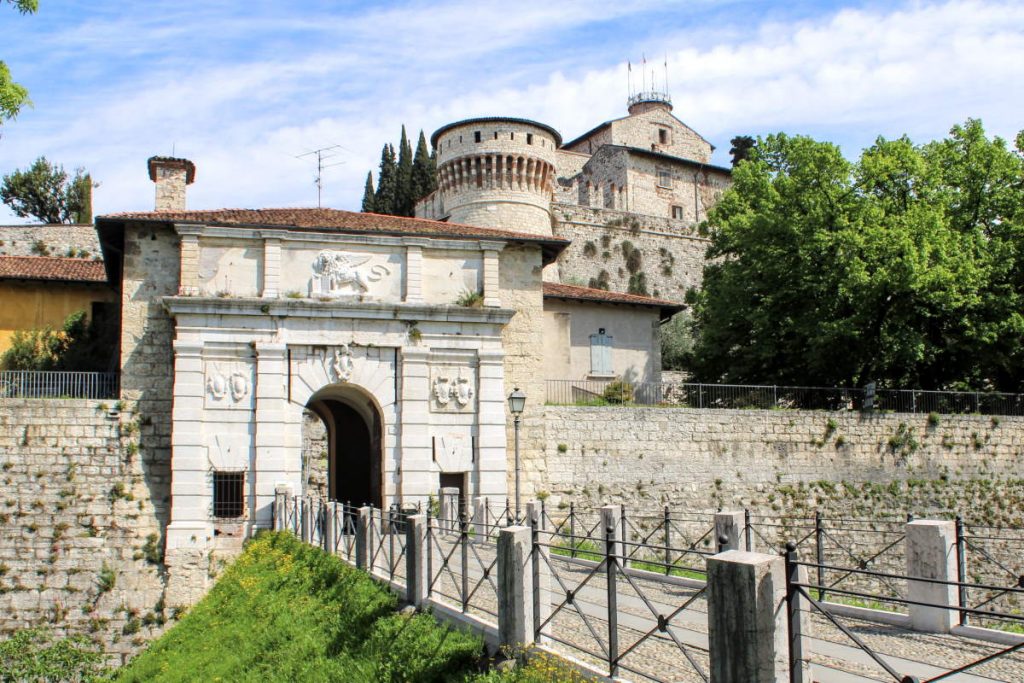
Leaving the castle, go left to the parking area and at the small roundabout turn right. Going down via del Castello you will find on your left via San Faustino, the main street of the central-northern area that runs alongside the ancient Carmine district. Along the way there is a weekly market every Saturday morning.
Piazza della Loggia
Along Via San Faustino you will arrive in Piazza della Loggia, another of the main squares of Brescia. On your right you will have the homonymous Palazzo della Loggia: a Renaissance palace, seat of the town hall. Its construction began in 1489 and ended in 1574. You can admire some of the rooms for free by presenting your identity card at the entrance.

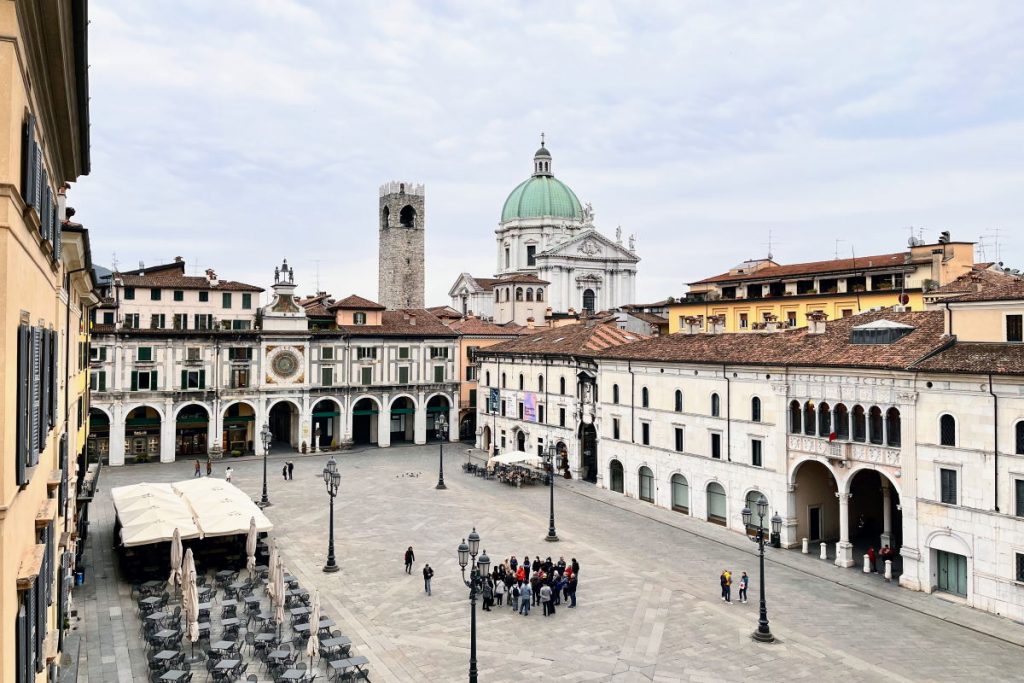
The opposite side of the square is bordered by arcades, also in Renaissance style, surmounted by the Astronomical Clock Tower. At the foot of the tower there is a stele in memory of the victims of the terroristic attack in Piazza Loggia, which took place on May 28, 1974.

If you go down to the right under the arcades of via X Giornate you will find yourself in corso Zanardelli, a pedestrian street that houses the Teatro Grande, countless designer shops and elegant cafés.
To return to piazza della Vittoria you must take via X Giornate and, before reaching piazza della Loggia, turn left into via IV Novembre to find yourself in the place of departure.
I hope you enjoyed this itinerary which includes the most important places to see in Brescia. If you have plans to visit the nearby Lake Garda, I suggest you read this other article about the Garda cycle and pedestrian path
